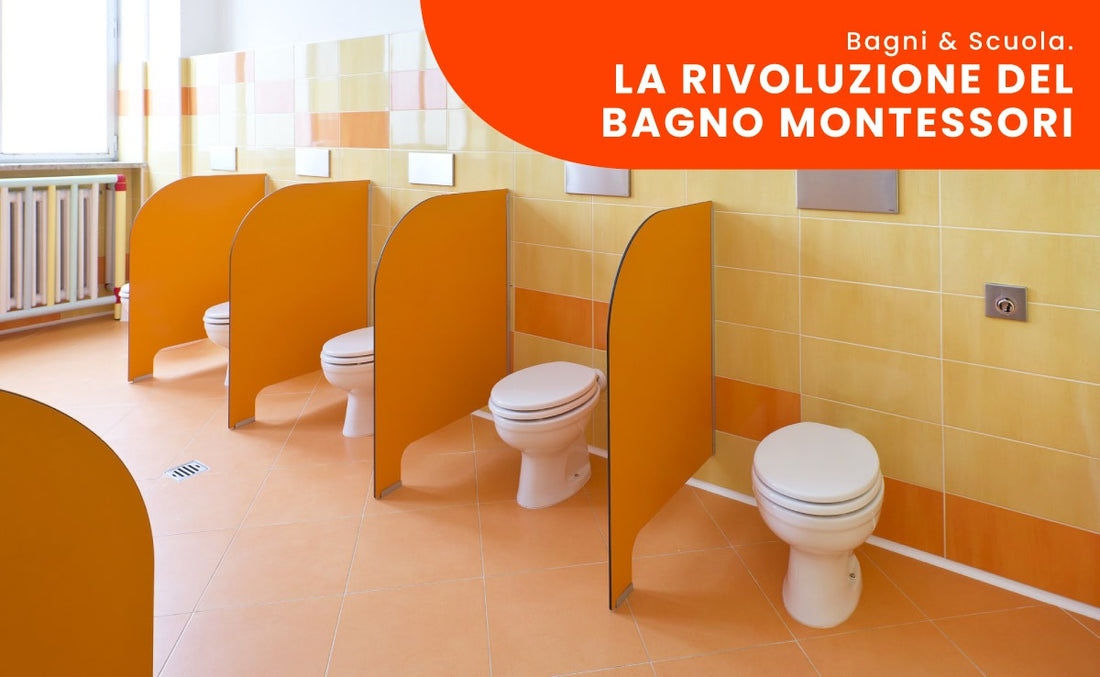
THE MONTESSORI METHOD REVOLUTION IN THE BATHROOM
The school year is about to begin, do you also have memories linked to moments spent in the school bathrooms?
A love message or a mean word written on the wall, cigarettes smoked in secret, a book left on the windowsill to copy during a class test, chats and confidences with friends.
And what do you remember about the bathrooms in your nursery or elementary school? If those bathrooms had a certain layout and a certain type of furniture, it is due to the revolutionary ideas of the pedagogue Maria Montessori .
The first Montessori school opened in Rome in 1907 in the San Lorenzo neighborhood. It was called Casa dei Bambini and was a laboratory where Montessori studied active pedagogy on children aged 3 to 6 years.
The Children's House was furnished with furniture proportionate to the height of the children . One of the great merits of Montessori education has always been the encouragement of the child's autonomy , which concerns every aspect of life and the day, including taking care of oneself in the bathroom: opening and closing the taps, using the towel, washing one's hands and teeth, combing one's hair .
In the Children's House, even the little ones took care of cleaning, serving meals at the table, taking care of the materials and the plants.

The furniture was not only well-proportioned but also easy to move for cleaning and of different shapes to allow for the most suitable solution to always be found for the different activities carried out by the children.
There were tables of various shapes, chairs of different materials, rugs, low sideboards and, of course, low sinks equipped with everything necessary.
According to Montessori, the surrounding environment had to evolve throughout the child's life . The organization of spaces, objects, routines and activities must follow the child's development and is functional to give space to the child's freedom, desire for discovery and action.

Obviously, depending on the age of the children, different proposals can be experimented with.
Typically , around the age of 2, they should start washing their hands and drying their face by themselves . It could therefore be useful to start with a small stool placed under the sink, a towel hook placed at their height, a mirror hung so that they can look at themselves, an accessible shelf where they can find a small bar of soap and some objects that refer to personal care, such as a brush or a hair band.
The laundry basket should also be made accessible to the child so that he can use it independently.
Some tips to transform your bathroom into a child-friendly bathroom:
1. Make a sink accessible

The child must be able to wash his hands, face, teeth . So if it is difficult to install a real miniature bathroom cabinet, you can use a ladder to allow him to easily reach the sink.
An alternative is to allow the child to use the bidet as a sink . The child must have available: his soap, his toothbrush and toothpaste, his cream, his brush and his towel so that he can use what he needs independently.
2. Fix a mirror to the wall

It is useful for the child to watch himself while he is doing his activities . This helps him learn the gestures to be performed and the knowledge of the depth of space.
3. Provide potty or toilet access

The child must have free access to the potty or toilet for which a reducer can be used.
4. Miniature hair dryer

The small and lightweight travel hair dryer can be a good help for the child to dry his hair independently: equipped with rubber slippers, far from the water, he can dedicate himself to drying in complete freedom. Often the intolerance of children in personal hygiene operations is to be found in the lack of their active participation in the actions.
What do you think? Have you ever done any of these things to make your bathroom kid-friendly?

